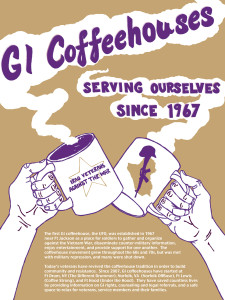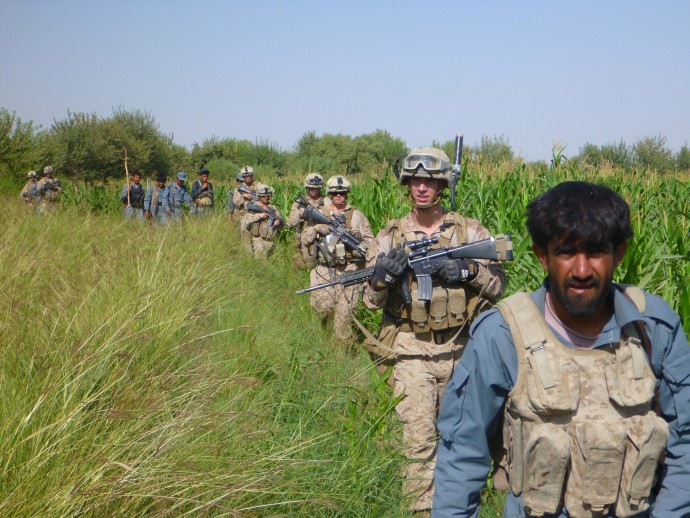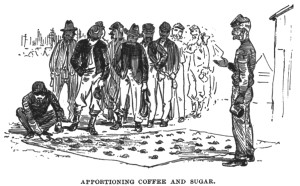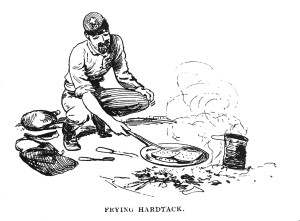[vc_row][vc_column][vc_column_text] [/vc_column_text][/vc_column][/vc_row][vc_row][vc_column width=”1/1″][vc_column_text]
RECIPES | SCHOLARS | MUSIC | EXTRAS | LINKS
[/vc_column_text][/vc_column][/vc_row]
[metaslider id=4830]
Hidden Kitchens: Story #2 / War and Peace and Coffee
A look at 3 American wars through the lens of coffee
The Civil War / Vietnam / Afghanistan
In April 1865, at the bloody, bitter end of the Civil War, Ebenezer Nelson Gilpin, a Union soldier wrote in his diary, “Everything is chaos here. The suspense is almost unbearable. We are reduced to quarter rations and no coffee. And nobody can soldier without coffee.”
If war is hell, then for many soldiers throughout American history, it is coffee that has offered some small salvation. Hidden Kitchens: War and Peace and Coffee looks at three American wars through the lens of coffee: The Civil War, Vietnam and Afghanistan.
The Civil War
War, freedom, slavery, secession, union – these are some of the big themes you might expect to find in the diaries of Civil War soldiers. At least, that’s what Jon Grinspan, a curator at the Smithsonian’s National Museum of American History, assumed when he began digging through war journals in the nation’s Civil War archives.
“I went looking for the big stories,” Grinspan says. “And all they kept talking about was the coffee they had for breakfast, or the coffee they wanted to have for breakfast.”
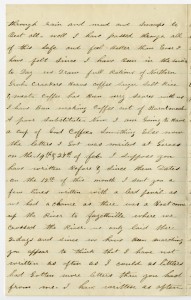
CM Hopper letter. Southern Historical Collection Wilson Library, University of North Carolina at Chapel Hill
The word coffee was more present in these diaries than the words war, bullet, cannon, slavery mother or even Lincoln. “You can only ignore what they’re talking about for so long before you realize that’s the story,” Grinspan says.
Union soldiers were given 36 pounds of coffee a year by the government, and they made their daily brew everywhere and with everything, with water from canteens and puddles, brackish bays and Mississippi mud – liquid their horses would not drink. “Soldiers would drink it before marches, after marches, on patrol, during combat,” Grinspan tells us.
The Confederacy, on the other hand, was decidedly less caffeinated. As soon as the war began, the Union blockaded Southern ports and cut off the South’s access to coffee.
“The Confederates had access to tobacco and Southern foods; Northern soldiers had access to coffee,” explains Andrew F. Smith, a professor of food studies at the New School in New York, and author of Starving the South: How the North Won the Civil War. “When there was not a battle going on, Confederate soldiers and Union soldiers met in the middle of fields and exchanged goods.” Smith says. The Confederates had access to tobacco and Southern foods; Northern soldiers had access to coffee.
Desperate Confederate soldiers would invent makeshift coffees, Grinspan tells us, roasting rye, rice, sweet potatoes or beets until they were dark, chocolatey and caramelized.The resulting brew contained no caffeine, but at least it was something warm and brown and consoling.
Perhaps the North’s access to caffeine gave them a strategic advantage. At least that’s what one Union officer, Gen. Benjamin Butler, thought. He ordered his men to carry coffee in their canteens and planned attacks based on when his men would be most wired. His advice to other generals was: “If your men get their coffee early in the morning, you can hold.”
Over the course of the war, as the Union army grew, its camps became makeshift cities, housing hundreds of thousands of men. “They were in battle maybe one or two weeks of the whole year,” Grinspan says. Most of the time, he adds, “they weren’t shooting their rifles at enemies, being chased or fired upon, but every day they made coffee.”
In 1859 Sharps Rifle Company began to manufacture a carbine with a hand-cranked grinder built into the butt stock – or handle – of the rifle. Union soldiers would fill the stock with beans, grind them up, dump them out and use the grounds to cook the coffee. As the morning began, one Civil War diarist described a scene of “little campfires rapidly increasing to hundreds in numbers that would shoot up along the hills and plains.” The encampment would buzz with the sound of thousands of grinders simultaneously crushing beans. Soon, tens of thousands of muckets [coffee pots] gurgled with fresh brew.
“Here’s an irony,” says Grinspan. “These soldiers who were fighting ostensibly to end slavery are fueled by this coffee from slave fields in Brazil.”
The Vietnam War
Coffee may have powered the Union army during the Civil War, but during the Vietnam War, it fueled the GI anti-war movement.
In the late 1960s and early ‘70s, as soldiers returning from Vietnam began to question the U.S. role in the war, GI coffeehouses sprung up in military towns outside bases across the country. They became a vital gathering place.
David Zeiger helped run the Oleo Strut, a GI coffeehouse outside Fort Hood in Killeen, Texas, for three years in the early 1970s. “An oleo strut,” he explains, “is the vertical shock absorber on a helicopter. The concept of the GI coffeehouse was as a shock absorber, a place where GIs could get away from the military and say what they really felt,” Zeiger says. In 2005, Zeiger, now a filmmaker, made Sir, No Sir, a documentary about the GI anti-war movement and the story of the Oleo Strut.
The first GI coffeehouse – called UFO (a play on USO) – opened in 1967, near Fort Jackson in Columbia, S.C. It was founded as a “hangout for GIs” by Fred Gardner.
“The UFO became a place where soldiers could gather and talk openly about their worries and frustrations, without the military brass around.” Gardner recalls. And in Columbia, says Gardner, UFO was a rarity – a place that “not just black and white but students and soldiers” could share.
Other GI coffeehouses followed – around two dozen by 1971, by some accounts. They included the Shelter Half in Tacoma, Wash., near Fort Lewis, the Green Machine outside Camp Pendleton in San Diego; and Mad Anthony Wayne’s in Waynesville, Mo., outside Fort Leonard, to name a few. As the anti-war movement heated up, these coffeehouses became places where GIs could get legal counseling on issues like going AWOL and obtaining conscientious objector status, and learn about ways to protest the war.
Many coffeehouses also began publishing newspapers, with exposés on poor conditions within military prisons, op-eds from disillusioned soldiers and information about rallies and demonstrations.
GI coffeehouses caught the eye of those leading the antiwar movement in Hollywood. Film director Mike Nichols helped fund the GI coffeehouse movement. And actress Jane Fonda’s anti-war road show, the FTA – an alternative to the USO shows that she created with Donald Sutherland – frequented the GI coffeehouses. The first time Fonda visited the Oleo Strut, the local newspaper had a big headline: “Barbarella comes to Killeen, Texas” (a reference to Fonda’s role in a 1960s sci-fi cult film.)
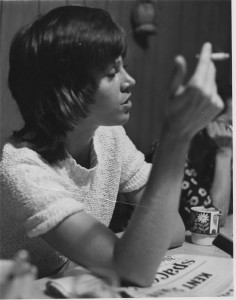
Jane Fonda at Oleo Strut Coffee House Killeen Texas circa May 1970 Photo by Thorne Dreyer/ Space City!
The coffeehouses also drew the attention of President Lyndon B. Johnson’ administration, which monitored their “subversive activities.” In August 1968, Army Chief of Staff Gen. William Westmoreland sent LBJ a secret memo noting that “consensus is that coffeehouses are not yet effectively interfering with significant military interests, and, consequently, suppressive action may be counter-productive,” as sociologist Tom Wells details in his book The War Within. The next month, however, Westmoreland reported to Johnson that several Oleo Strut frequenters had been arrested.
Afghanistan
“The military runs on coffee,” says Harrison Suarez, co-founder of Compass Coffee in Washington DC. “The Marines especially. It’s this ritual.”
Suarez and Michael Haft, who started Compass together, “first became friends in the Marines over coffee,” Suarez says, “learning how to navigate with a map and compass.” On their first day of training in North Carolina, it was “Hey Gunny, want to get together for a cup of coffee?” recalls Suarez. “That’s how pretty much every new relationship in the Marines is formed.”
As the war in Afghanistan intensified, both Suarez and Haft deployed there with the 1st Battalion, 9th Marines. One of their missions was to help develop the local police force and army. The two men tried to bond with their new Afghan partners over coffee, Suarez recalls, but the Afghans weren’t having it.
“Any time we shared coffee with our Afghan partners, it was just a train wreck,” Haft says. The Afghan culture is much more about tea.” It was important to the friends to embrace local culture, so they quickly learned to stop pushing the java. Regardless of what was in the cups, the experience of gathering together over a hot drink and “taking time to develop a rapport with your partners that you are fighting alongside holds the same,” says Suarez.
But it was coffee that fueled the American troops stationed there, with Marines sharing morning brew with their platoon commanders as they all gathered to discuss the day’s plans. As it was a century earlier, coffee became a ritual of war.
When Haft and Suarez returned home after their deployment, their coffee obsession deepened. “Everybody gets into something when they return home from the war. For us, it was coffee,” says Haft. A quest to learn how to brew the perfect cup first led them to write a book, and eventually to open Compass Coffee, a roastery and a community gathering place in northwest Washington, D.C.
And they haven’t forgotten their time with the Marines, where their passion for coffee first took root. “We’ve sent coffee to Marines on aircraft carriers, to Afghanistan,” Haft says. “Basically any time any soldier requested some crazy coffee delivery, we’ve done our best to accommodate getting it out to them.”
The business has started to expand quickly – there are now several branches of Compass throughout the city, and tins of Compass’ signature roasts are available at several local grocery stores.
When we visited them at their flagship coffee shop in northwest, D.C., the roaster was going strong and new equipment was being installed in the cupping room. The weekly schedule was posted in the staff room designed using organizing strategies the two friends learned in the Marines.
Over a cup of Compass brew, Suarez summed things up. “Going back all the way to the Civil War and up to our experience in Afghanistan, you’ve got this common thread of people coming together, sharing their experience, their stories over coffee.”
Special Thanks: War and Peace and Coffee was inspired by a story by Jon Grinspan that we first read on Nedslist, Ned Sublette’s mighty newsletter. Thanks to Ned and Jon. The Civil War: Jon Grinspan, Andrew F. Smith. Vietnam: Fred Gardner, David Zeiger, Donna Mickelson, Deborah Rossman, Jane Fonda. Afghanistan: Harrison Suarez, Michael Haft, Compass Coffee, Washington DC, Anastacia Marx de Salcedo, Lisa Gilman Photos: Thorne Dreyer, Alan Pogue, Molly Fair, Alexander MacKenzie and the Springfield Armory National Historic Site. And: Radiotopia
Hidden Kitchens: War & Peace & Food is made possible in part by a grant from the National Endowment for the Humanities
[vc_row][vc_column][vc_column_text]
[/vc_column_text][/vc_row][symple_divider style=”solid” margin_top=”20px” margin_bottom=”20px”]
Civil War Era Recipes
[symple_tabgroup]
[symple_tab title=” Yankee “Instant” Coffee Syrup “]
Yankee “Instant” Coffee Syrup
Take a 1/2 pound of ground coffee, and boil in 3 quarts of water until the quantity is reduced to 1 quart.
Strain until all of the grounds are removed, and then put in a clean pan and boil again, gradually adding granulated sugar until it forms a thick syrup the consistency of molasses.
Allow to cool, and then seal tightly in bottles. To make “instant” coffee, place 2 teaspoons of the syrup in a coffee cup and fill with boiling water.
[/symple_tab]
[symple_tab title=”Blockade Sweet Potato Coffee“]
Blockade Sweet Potato Coffee
“Peel your potatoes and slice them rather thin, dry them in the air or on a stove, then cut into pieces small enough to go into the coffee mil, then grind it. Two tablespoons full of ground coffee and three or four of ground potatoes will make eight or nine cups of coffee, clear, pure and well tasted.”
Albany Ga. Patriot, December 12, 1861.
Ingredients:
-Sweet Potatoes
-Coffee
Instructions:
Peel your sweet potatoes. Using a peeler or knife, peel the sweet potatoes into thin strips and lay on a plate or cookie sheet and lay in the sun. Depending on weather it can take 5-10 hours of direct sunlight. Once dry, you should be able to crush the potatoes with your fingers. Break the pieces small enough to grind in a mill or coffee grinder. Grind it up and put into a dry container for storage. When you are ready to make the coffee, use 3 Tablespoons of Sweet potato mixed with 2 Tablespoons of Coffee.
[Recipe from: http://worldturndupsidedown.blogspot.com/2016/03/civil-war-era-blockade-coffee-recipe.html]
[/symple_tab]
[symple_tab title=”Hardtack“]
Hardtack
Recipe adapted from The Civil War Cookbook by William C. Davis
Mix 5 cups of flour to 1 cup of water containing a 1/2-tablespoon of salt.
Knead into a dough and roll out to 3/8-inch thickness.
Cut into approximately 3-inch squares and pierce each with a fork or ice pick several times.
Bake in a 400-degree oven for 30 minutes or until slightly brown.
[/symple_tab]
[/symple_tabgroup]
[symple_divider style=”solid” margin_top=”20px” margin_bottom=”20px”][vc_row][vc_column][vc_column_text]
Humanists & Scholars

Jon Grinspan, PhD
Museum Curator & Jefferson Fellow
Division of Political History
National Museum of American History
Smithsonian Institution
Excerpt from Jon Grinspan interview
The Civil War brought a huge volume of diaries written by ordinary people, those who never would’ve written down their feelings except for the fact that they were recruited into this big world-changing event. I went looking for big stories about the meaning of the war, slavery or democracy and all they kept talking about was the coffee they wanted to have for breakfast. [Coffee] is more present in the diaries than keywords you would search for, like war, bullet, cannon, slavery, or even Lincoln. You can only ignore what they are talking about for so long before you realize that that’s the story – when they wake up, all they want is a cup of coffee. So, I turned my focus towards the coffee itself.
The soldiers are teetering between savagery and a civilized lifestyle. They are fighting in these wars; they all have some form of dysentery or another, they are watching their friends die, they are involved in this horrible barbaric situation and often the one thing that can lift them out of that is a hot cup of coffee. There are standards – coffee is the first, you drink coffee after you get out of the battlefield. They didn’t have filtered coffee pots, so they would put coffee into a tin. They called it a mucket because of that the muck that developed at the bottom. If you can get sugar for your coffee, you know you are doing slightly better. If you can have cream in coffee, you know you’ve made it to some kind of safety or civilization again. Soldiers used the expression “sugar in my coffee” to mean a good thing, a moment of grace in a difficult situation.
[read more=”Read more” less=”Read less”]
Someone wrote a book on how to live in an army camp called “Hardtack and Coffee” and the thing he kept coming back to was that every unit had one idiot who spilled the coffee. After a long march, after a hard day of fighting, soldiers would set up camp. They’d build a fire, set up their tents, and cook their coffee and then one klutz would just knock over the coffee pot at end of the night. This is the story, this is what they care about more than the war they are fighting. Most of the coffee was from Brazil – a slave nation at the time – so the coffee was produced by slavery. These soldiers who fighting ostensibly to end slavery, are fueled by coffee coming from slave fields.
They had all kinds of grinders, some in the stock of muskets and carbines, that they had built-in. They called them coffee machines, little boxes you put coffee in with a hand crank. They don’t look that different than a hand grinder you could find today, but they were absolutely precious to these soldiers. When they had to flee, when they had to go somewhere fast, after leaving their other equipment, they always brought their grinders. That is a hidden kitchen. You wonder what that must have been like, to unload the musket first. You have this carbine and you only spend a few days a year fighting, but you drink coffee every day. At some point, are you shooting at people with a coffee machine? How do you see the gun?
To lose grinders was a terrible thing. The Confederates who didn’t have access to coffee and didn’t have the same coffee civilization built up in their camps sometimes captured 6,000 grinders at the same time. That was a big day because they knew they could have coffee. The worst thing the Union did to the south was not to occupy their territory or shoot at them, it was to keep them from getting their coffee. The people in the Confederacy wanted it as much as anyone else, but due to the Union’s blockade they couldn’t have it, so they invented all of these makeshift coffees. They start roasting in a rye, rice, sweet potatoes, or beets until they’re brown, kind of chocolatey and caramelized. They would brew coffee out of that and for the soldiers who had nothing else, it’s a cup of something warm and brown to drink.
Every presidential candidate who’d been in the Civil War during this period in the late 19th century needs a heroic story. William Mckinley’s heroic story is not taking a hill, winning a battle, or giving commands; Mckinley brought big vats of coffee to the soldiers pinned down in the bloodiest single day of fighting in American history, the battle of Antietam. He gets a wagon, fills up some hot coffee, and brings it to them in the middle of the fight; it’s mentioned on plaques and statues to him. There is not much else to Mckinley. He was a party man with strong beliefs, an amiable, nice guy, but his selling point, his human moment, is that he brought coffee to the soldiers. He offered them the symbol of safety.
Coffee makes a morale difference and a symbolic difference. The nation in the 1860s was teetering between a modern, more industrial, more middle-class consumer America, and an older style of life. There’s the Union, a northern culture that is far more middle-class, far more consumer oriented, a little more industrialized, and a little more urban. Coffee provides some consolation that the system is still looking out for you in some way. It can’t keep you from being killed, it can’t keep you from being horribly wounded, but it can get you a warm cup of coffee. There is something very bourgeois about it: this is civilization and we can bring it to you even in the middle of a battlefield in Virginia.
[/read]

Andrew F. Smith, PhD
Assistant Professor
New School University
Articles
This story was inspired by Jon Grinspan’s How Coffee Fueled the Civil War
The Story of the GI Coffeehouses by Eric Ruder
For additional references, please see the following publications:
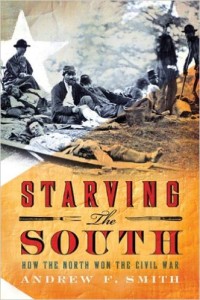 |
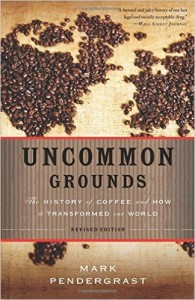 |
[symple_divider style=”solid” margin_top=”20px” margin_bottom=”20px”]
Music
Sandy Bull – Gospel Tune
Neu- Seeland
The Electric Prunes- I Had Too Much To Dream (Last Night)
Marvin Gaye – Ain’t That Peculiar
Lucky Dragons – Typical Hippies
Afghan National Institute of Music – Bolero
[symple_divider style=”solid” margin_top=”20px” margin_bottom=”20px”]
Extras
GI Coffeehouses in Film
Sir! No Sir!
A film about the GI Movement against the war in Vietnam. Directed by David Zeiger.
FTA
This documentary follows the 1972 tour of theatrical troupe Free Theater Associates as they perform in various locations around the Pacific Islands. Led by a handful of socially conscious performers that includes actors Jane Fonda and Donald Sutherland, comedian Paul Mooney and folksinger Len Chandler, the group collectively protests the Vietnam War via humorous skits, sing-alongs, dramatic readings and first-person testimonials from a number of military veterans. Directed by Francine Parker.
Grounds for Resistance
Inspired by the Vietnam-era G.I. coffeehouse movement, young American veterans of the Iraq and Afghanistan wars opened Coffee Strong 300 meters from Joint Lewis-McChord Base in November 2008. This non-profit cafe is a space where soldiers, veterans, and military families discuss politics and the impact of war. It also provides G.I. counseling, as well as resources for those struggling with combat stress, military sexual trauma, difficulties with veteran benefits, or legal mazes. At the center of this documentary are the veterans who run Coffee Strong. The film explores their decisions to join the military, memories of deployment, relationships with one another, and how their efforts to make a more peaceful and just world help them cope with their own experiences of war. Directed by Lisa Gilman.
Back to top
[symple_divider style=”solid” margin_top=”20px” margin_bottom=”20px”]
Links
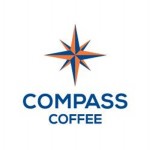 |
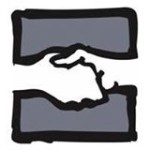 |
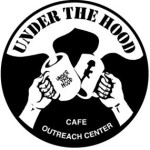 |
|||
| Compass Coffee 1535 7th St. NW Washington, DC |
Coffee Strong 203 4th Ave E, suite 207 Olympia, WA 98501 |
Under the Hood Fort Hood Support Network P.O. Box 388 Killeen, TX 76540 |
|||


